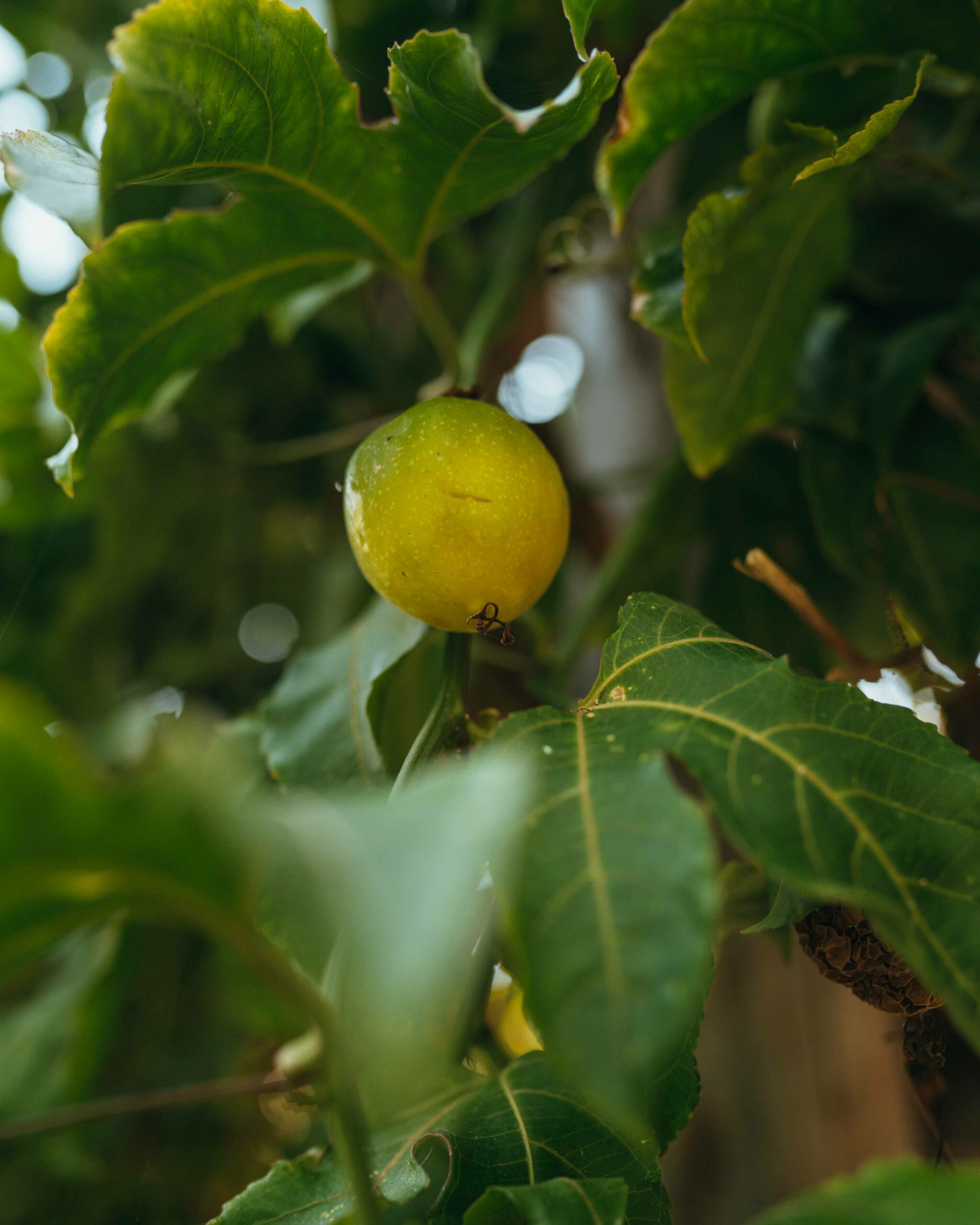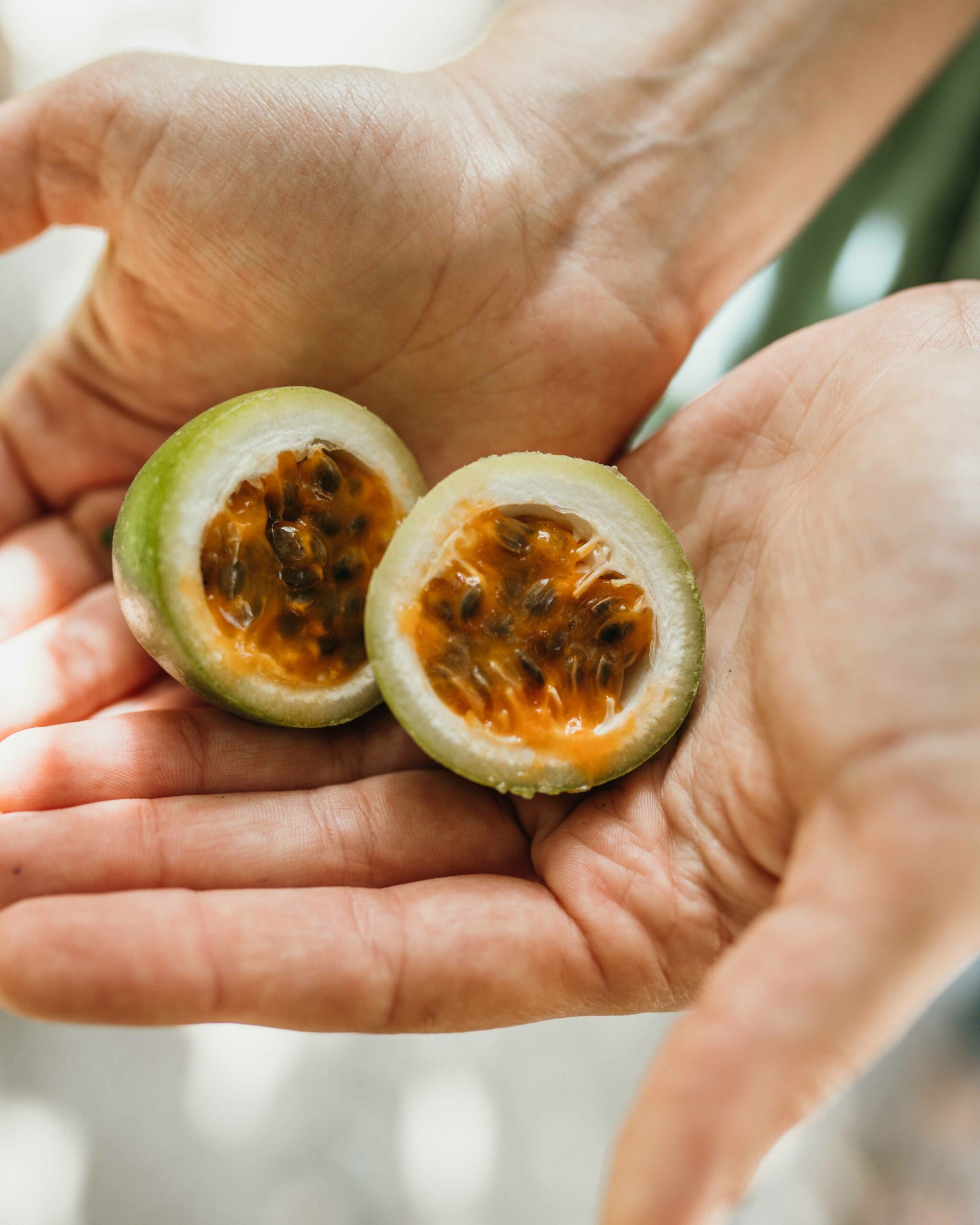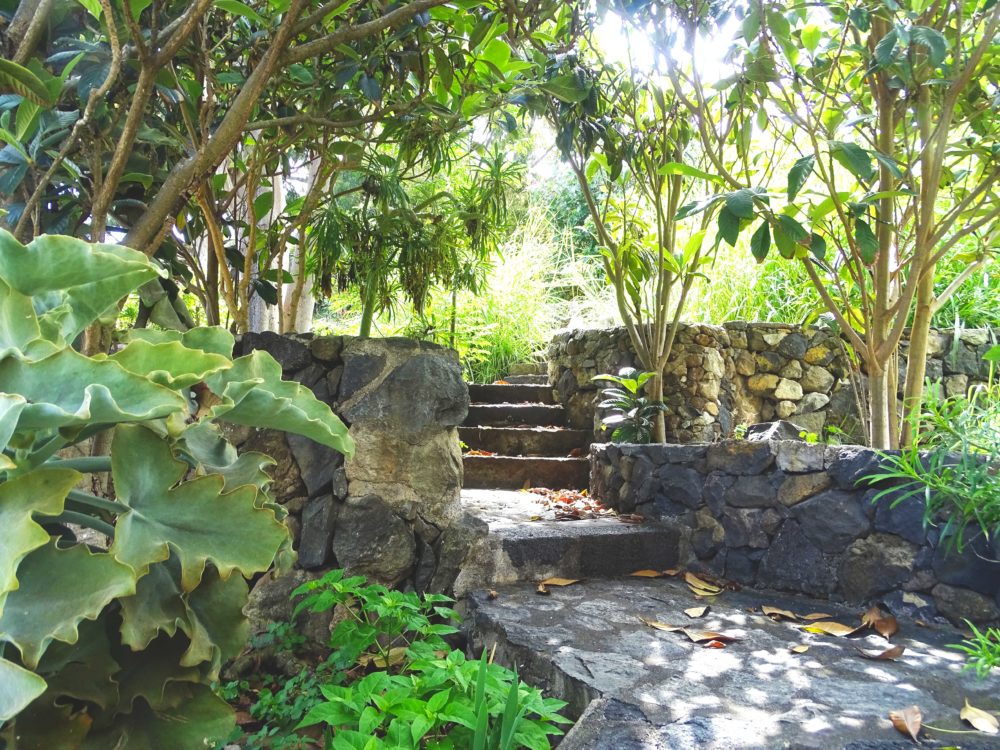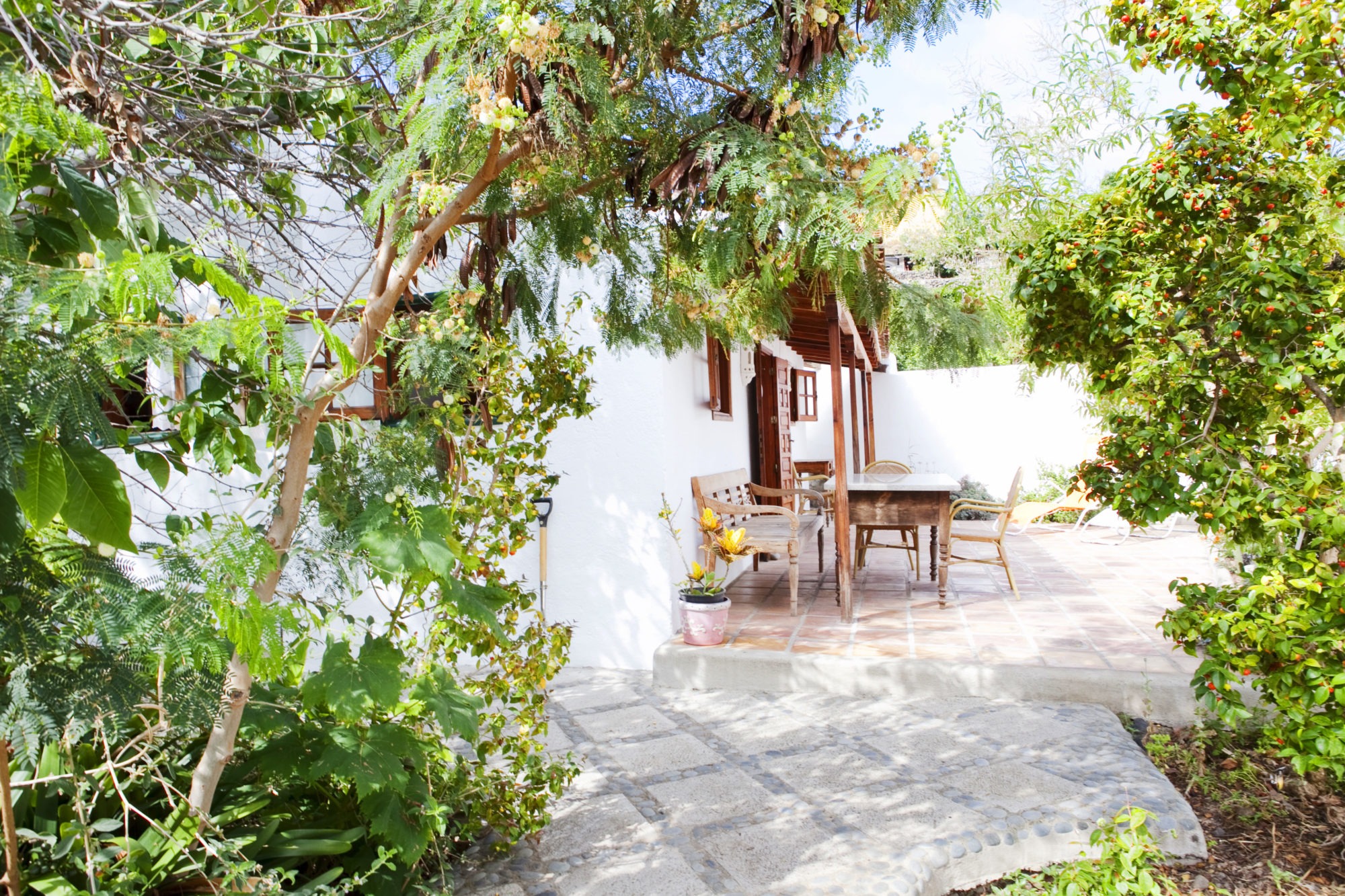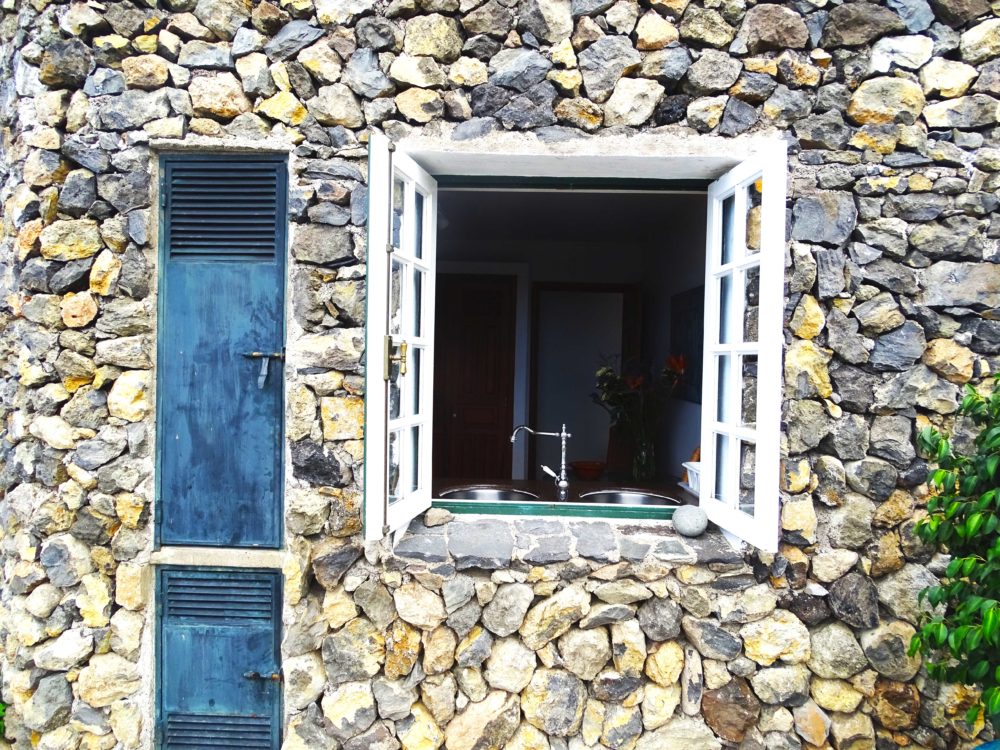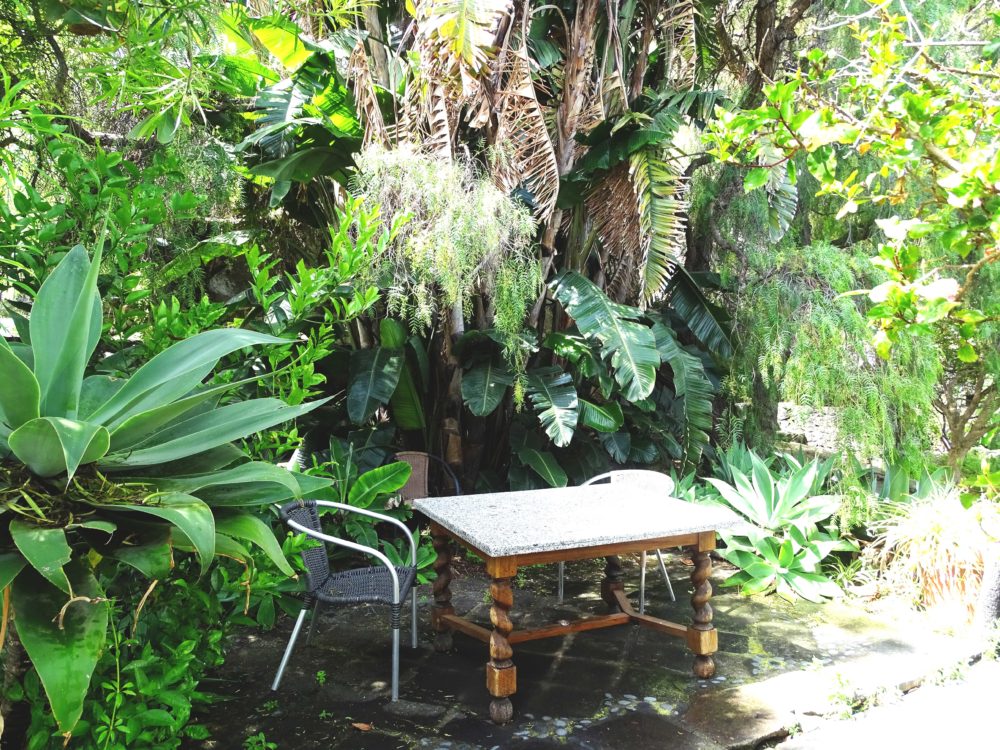Passiflora edulis
PASSIONSFRUCHT, MARACUJA
Englische Bezeichnung: Passionfruit
Spanische Bezeichnung: Pasionaria, Maracuya
Familie
Passionsblumengewächse (Passiflora)
Verwendbare Teile:
Früchte, Blüten
Hauptbestandteile:
Mineralstoffe: Magnesium, Phosphor
Vitamine: C
Sekundäre Pflanzenstoffe: Antioxidantien (Flavonoide)
Ernte-Hinweise:
Eine reife Passionsfrucht erkennt man daran, dass ihre Schale nicht mehr grün ist, sie gibt dann in der Regel auf Fingerdruck leicht nach.
Selbst reife Passionsfrüchte können bei Raumtemperatur noch einige Tage so lange aufbewahrt werden, bis sie anfangen zu schrumpeln. Dann sind sie noch süßer.
Verwendung:
-
Frucht: Obstsalat, Smoothies, Getränke, Desserts, Eis
-
Blüte: Tee, Sud, Tinktur
Der Name stammt aus dem 16. Jahrhundert und bezieht sich auf die Passion Christi. Sie entsprang der Phantasie katholischer Missionare in Brasilien, die in der Form der Passionsblume das Symbol Christi sahen.
Maracujas haben einen einzigartigen, typischen und sehr aromatischen und erfrischenden Geschmack.
Die Passionsblume ist ein ausgezeichnetes beruhigendes Nervengift. Klinische Studien berichteten, dass Passionsblumentee die Schlafqualität und Angststörungen verbessern kann.
Family
Passionflower family (Passiflora)
Usable parts:
Fruits, flowers
Main components:
Minerals: magnesium, phosphorus
Vitamins: C
Secondary plant substances: antioxidants (flavonoids)
Harvesting guideline:
You can recognise a ripe passion fruit by the fact that its skin is no longer green, it then usually gives slightly at finger pressure.
Even ripe passion fruits can be kept at room temperature for a few more days until they start to shrivel. Then they are even sweeter.
Use:
-
Fruit: fruit salad, smoothies, drinks, desserts, ice cream
-
Flower: Tea, decoction, tincture
The name dates back to the 16th century and refers to the Passion of Christ. It came from the imagination of Catholic missionaries in Brazil who saw the symbol of Christ in the shape of the passion flower.
Passion fruit has a unique, typical and very aromatic and refreshing taste.
Passion flower is an excellent sedative neurotoxin. Clinical studies reported that passion flower tea can improve sleep quality and anxiety disorders.
Familia
Familia de las pasionarias (Passiflora)
Partes utilizables:
Frutas, flores
Componentes principales:
Minerales: magnesio, fósforo
Vitaminas: C
Sustancias vegetales secundarias: antioxidantes (flavonoides)
Guía de cosecha:
Se reconoce una maracuyá madura porque su piel ya no está verde y suele ceder ligeramente al presionarla con el dedo.
Incluso las frutas de la pasión maduras pueden conservarse a temperatura ambiente unos días más, hasta que empiezan a arrugarse. Entonces son aún más dulces.
Uso:
-
Fruta: macedonia, batidos, bebidas, postres, helados
-
Flor: Té, decocción, tintura
El nombre se remonta al siglo XVI y hace referencia a la Pasión de Cristo. Surgió de la imaginación de los misioneros católicos en Brasil, que vieron el símbolo de Cristo en la forma de la flor de la pasión.
La fruta de la pasión tiene un sabor único, típico y muy aromático y refrescante.
La pasiflora es un excelente neurotóxico sedante. Según estudios clínicos, el té de pasiflora puede mejorar la calidad del sueño y los trastornos de ansiedad.
